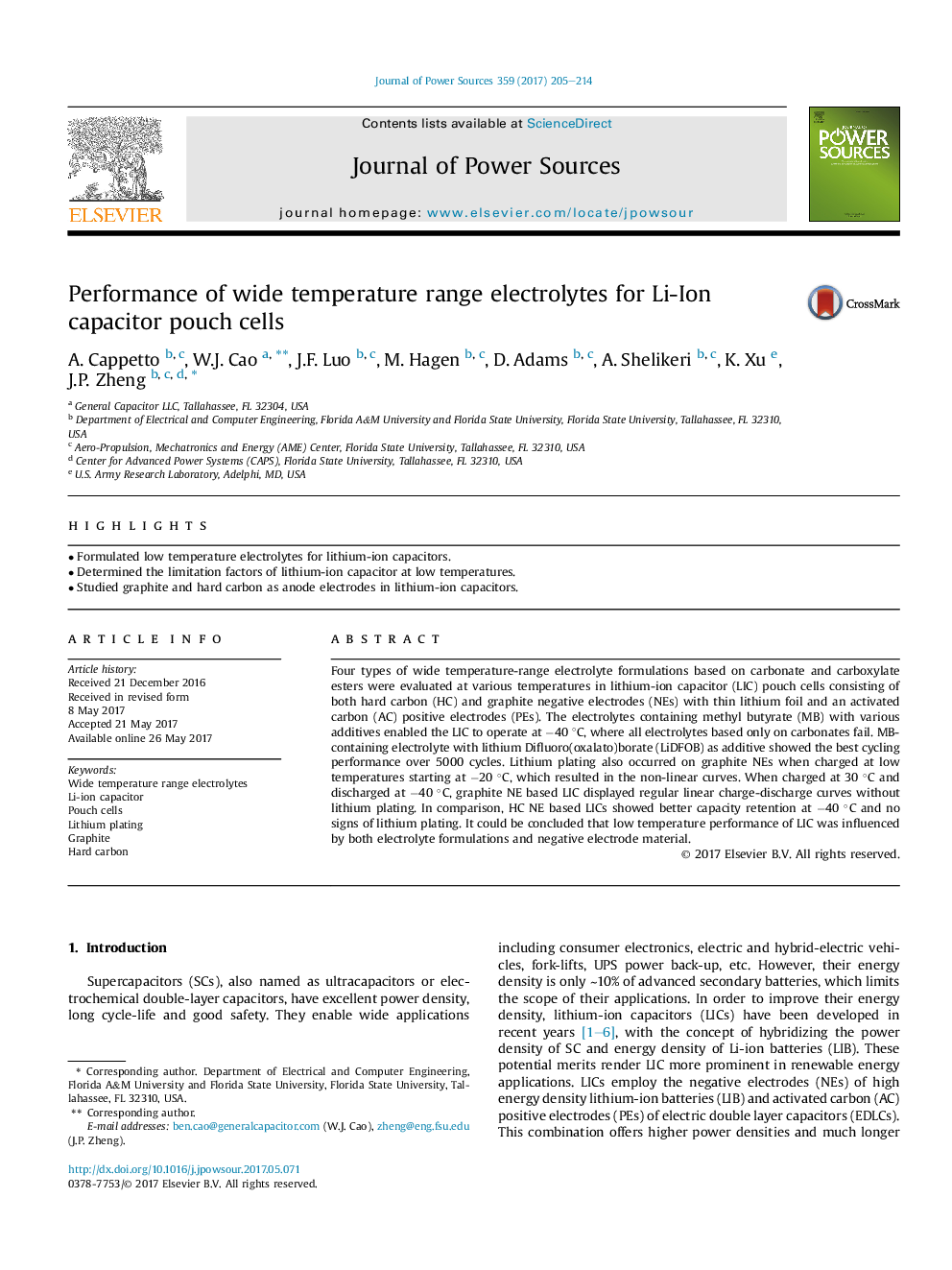| Article ID | Journal | Published Year | Pages | File Type |
|---|---|---|---|---|
| 5149093 | Journal of Power Sources | 2017 | 10 Pages |
Abstract
Four types of wide temperature-range electrolyte formulations based on carbonate and carboxylate esters were evaluated at various temperatures in lithium-ion capacitor (LIC) pouch cells consisting of both hard carbon (HC) and graphite negative electrodes (NEs) with thin lithium foil and an activated carbon (AC) positive electrodes (PEs). The electrolytes containing methyl butyrate (MB) with various additives enabled the LIC to operate at â40 °C, where all electrolytes based only on carbonates fail. MB-containing electrolyte with lithium Difluoro(oxalato)borate (LiDFOB) as additive showed the best cycling performance over 5000 cycles. Lithium plating also occurred on graphite NEs when charged at low temperatures starting at â20 °C, which resulted in the non-linear curves. When charged at 30 °C and discharged at â40 °C, graphite NE based LIC displayed regular linear charge-discharge curves without lithium plating. In comparison, HC NE based LICs showed better capacity retention at â40 °C and no signs of lithium plating. It could be concluded that low temperature performance of LIC was influenced by both electrolyte formulations and negative electrode material.
Related Topics
Physical Sciences and Engineering
Chemistry
Electrochemistry
Authors
A. Cappetto, W.J. Cao, J.F. Luo, M. Hagen, D. Adams, A. Shelikeri, K. Xu, J.P. Zheng,
